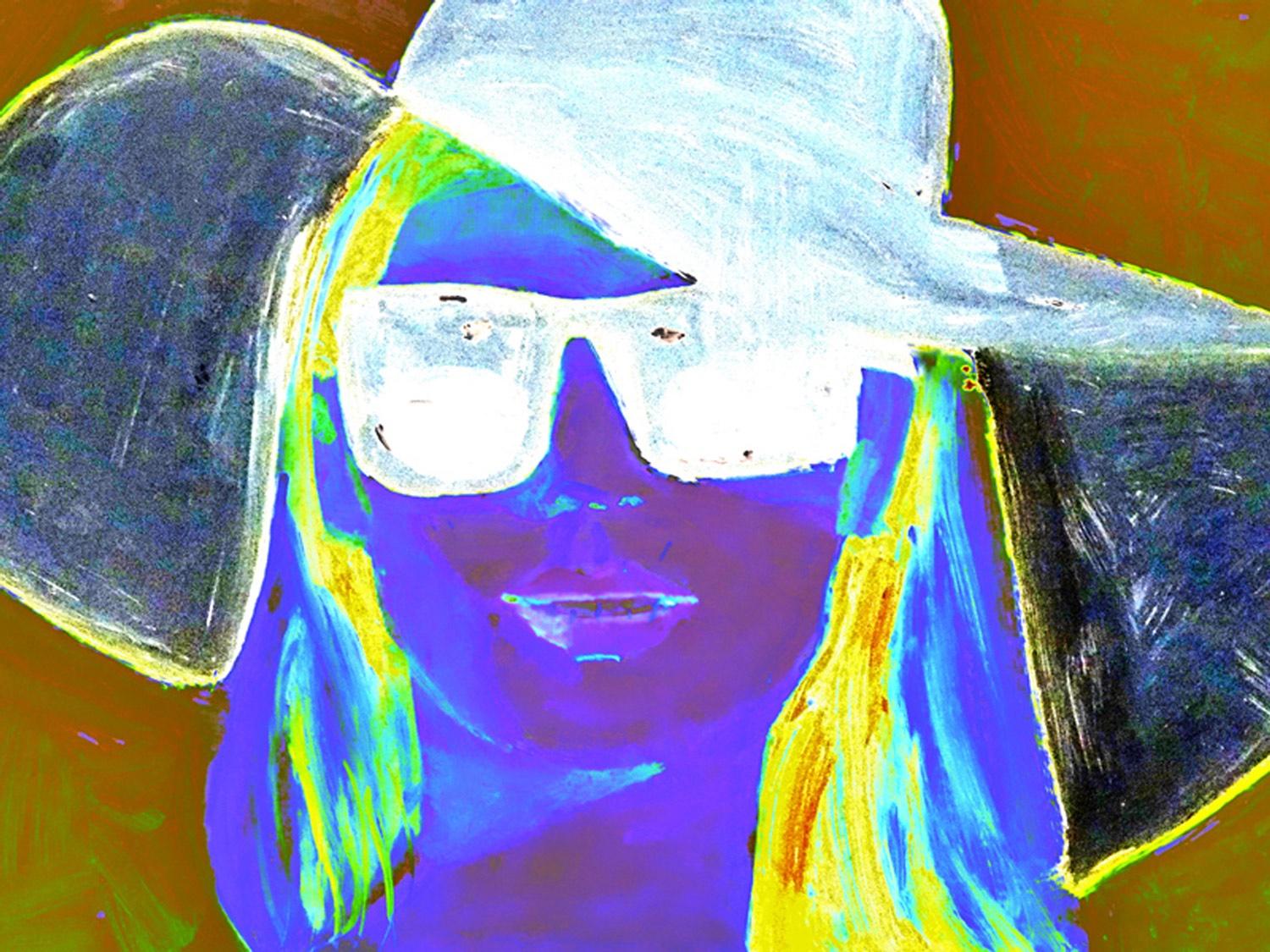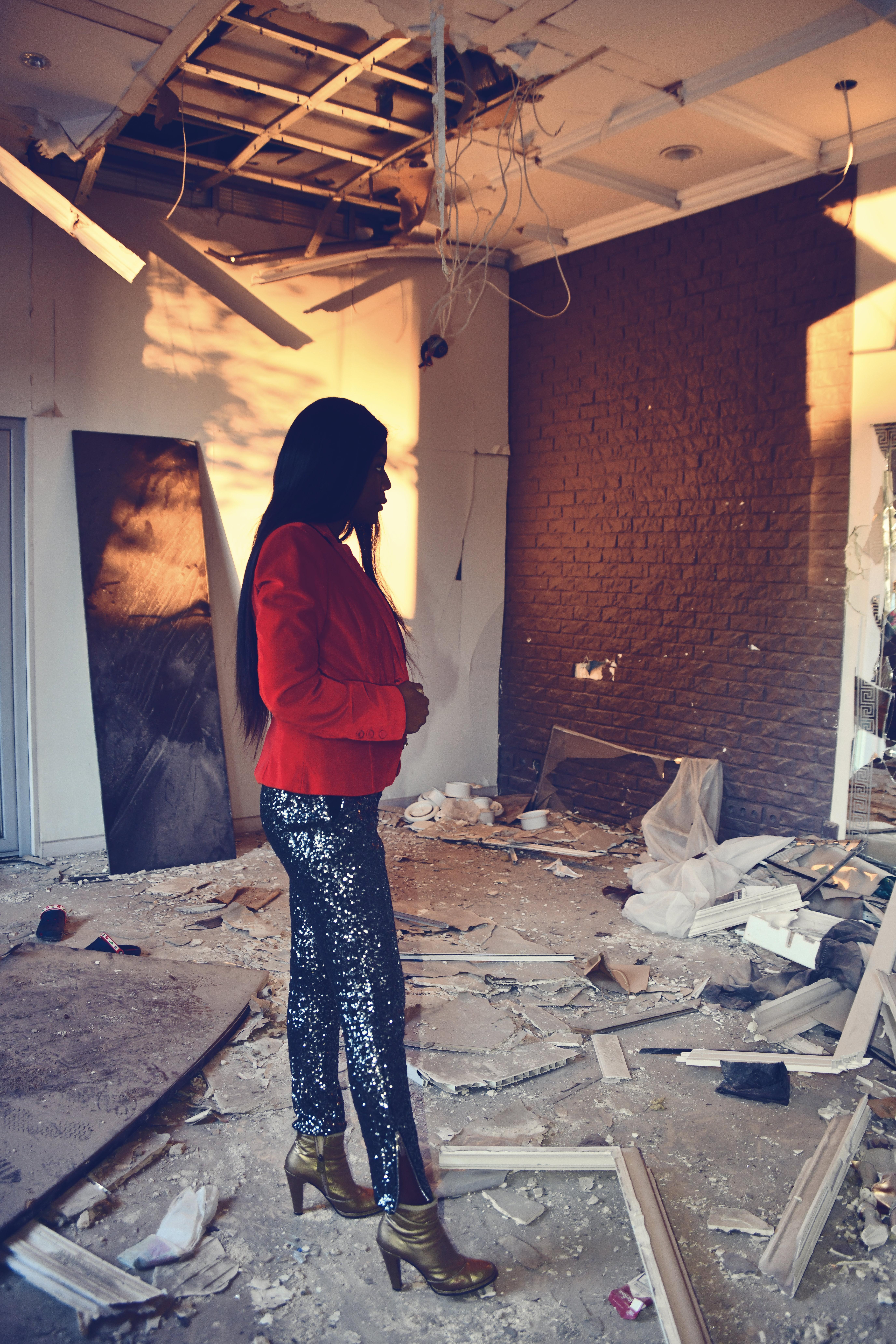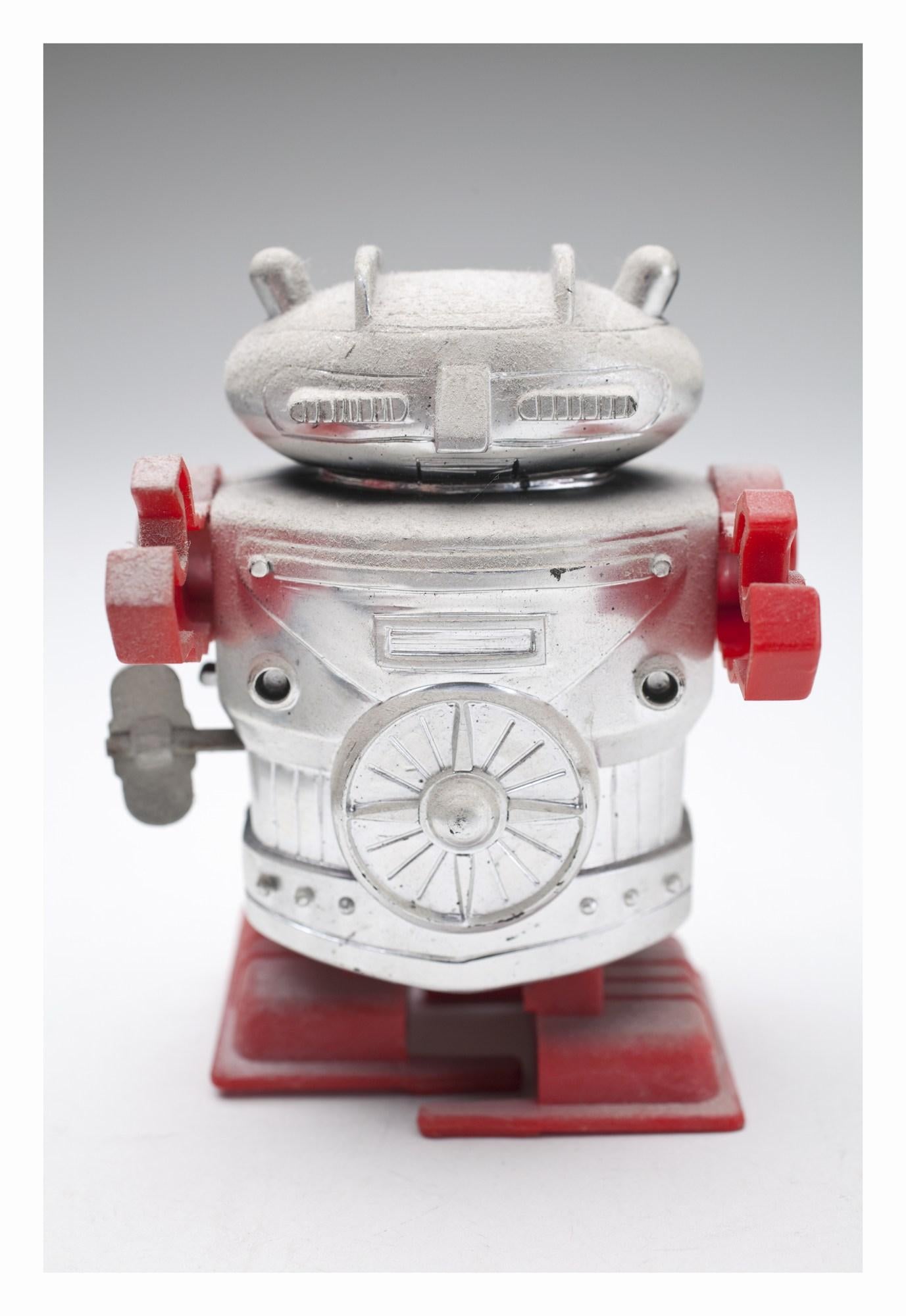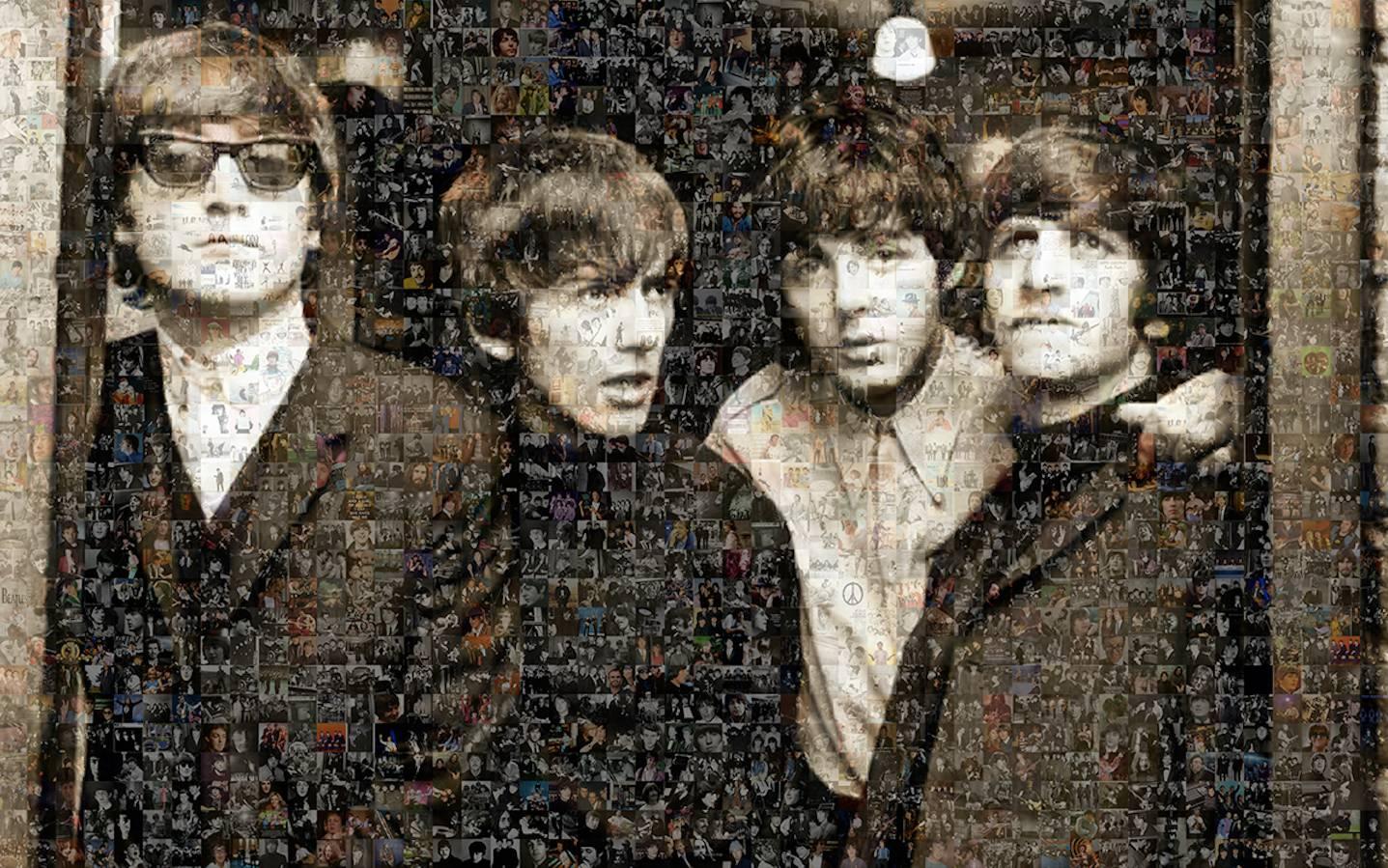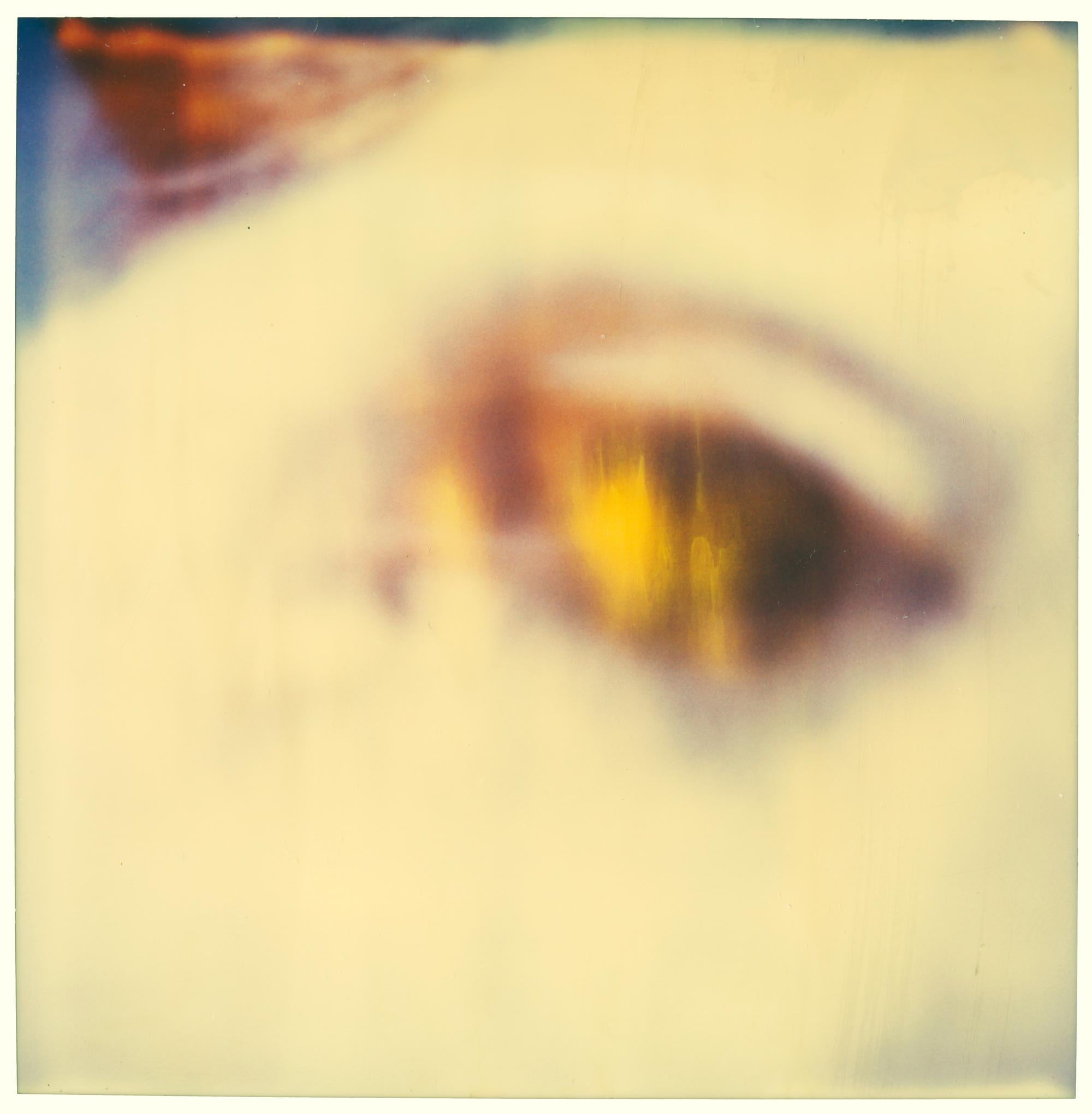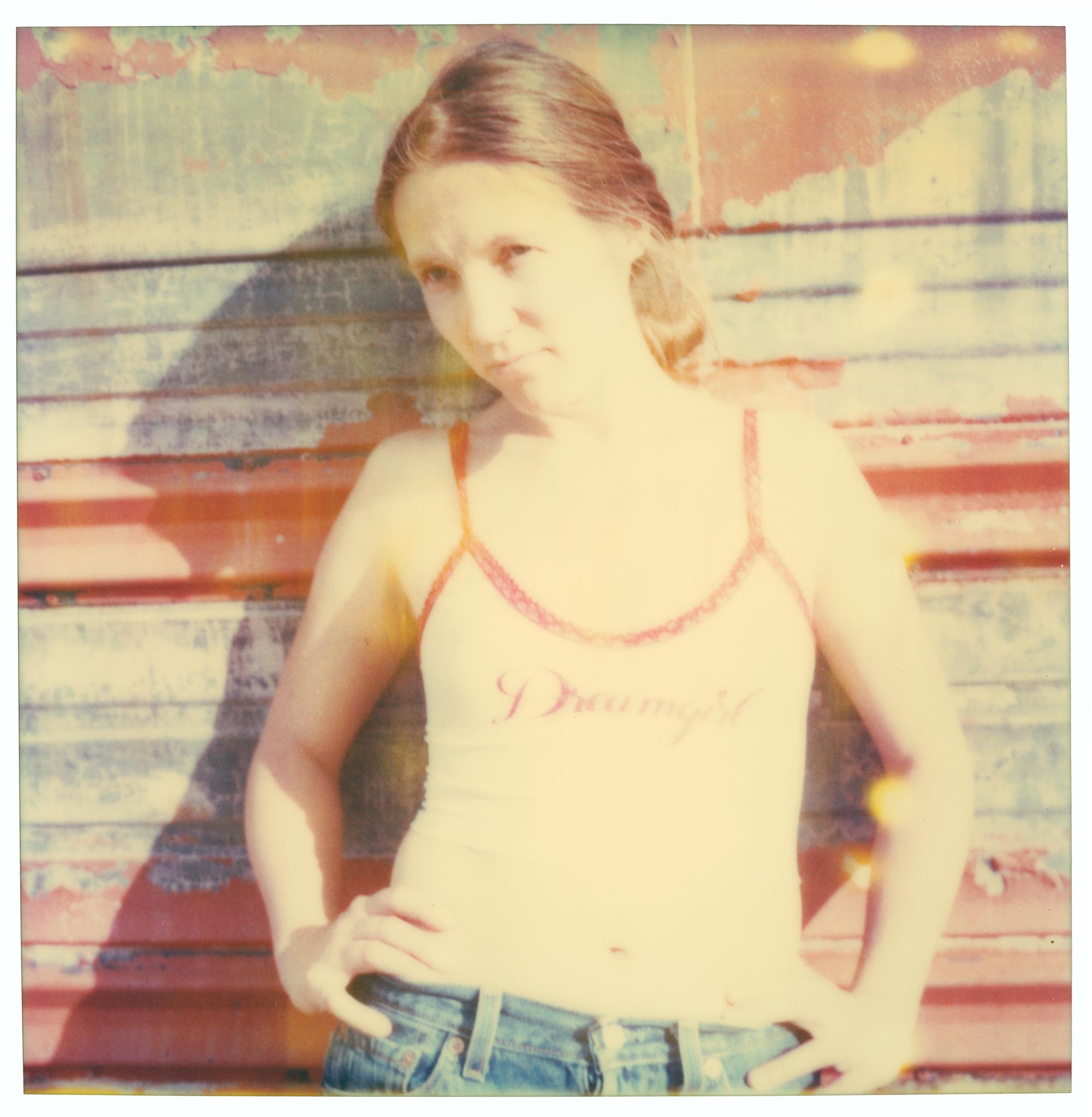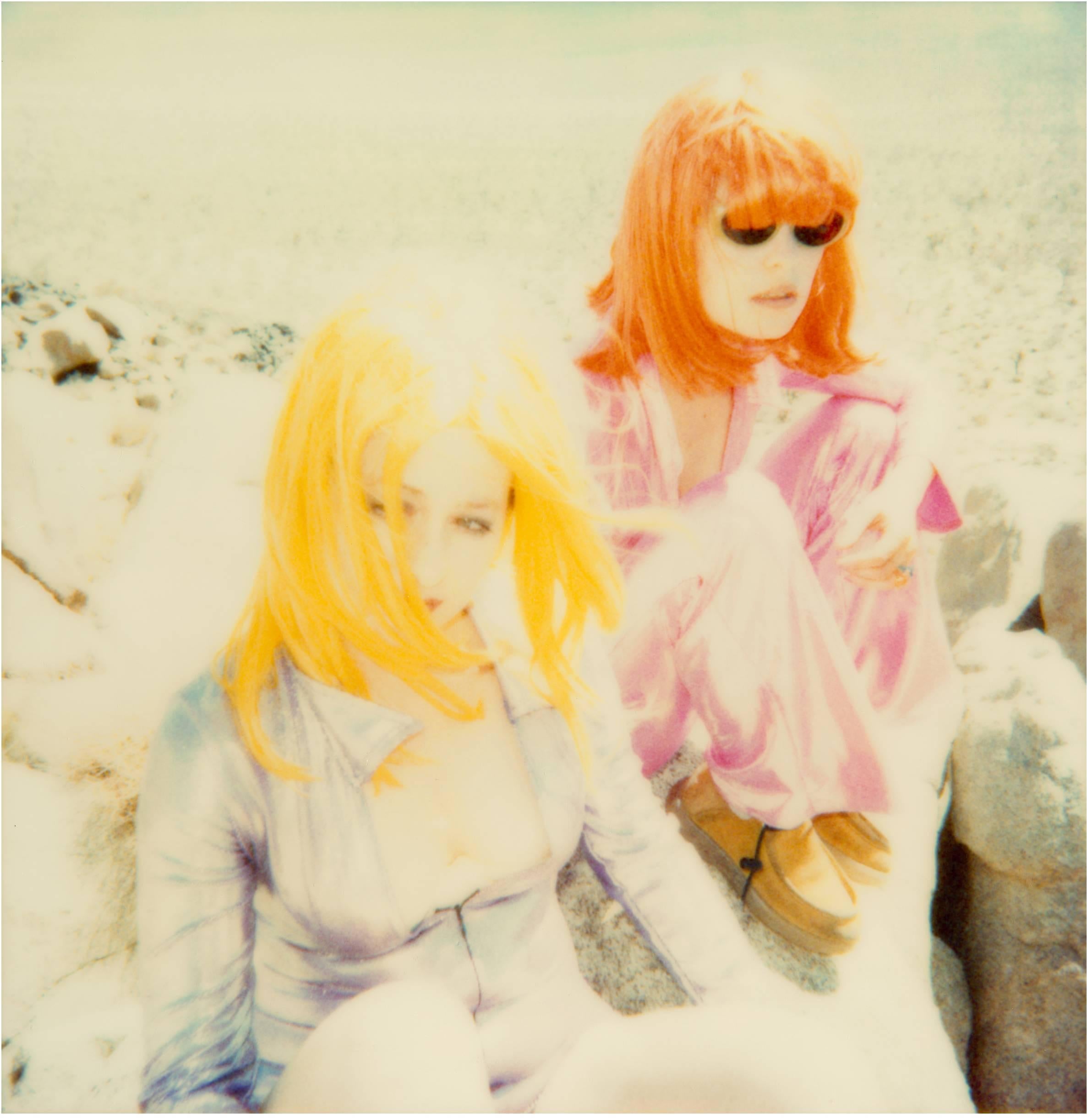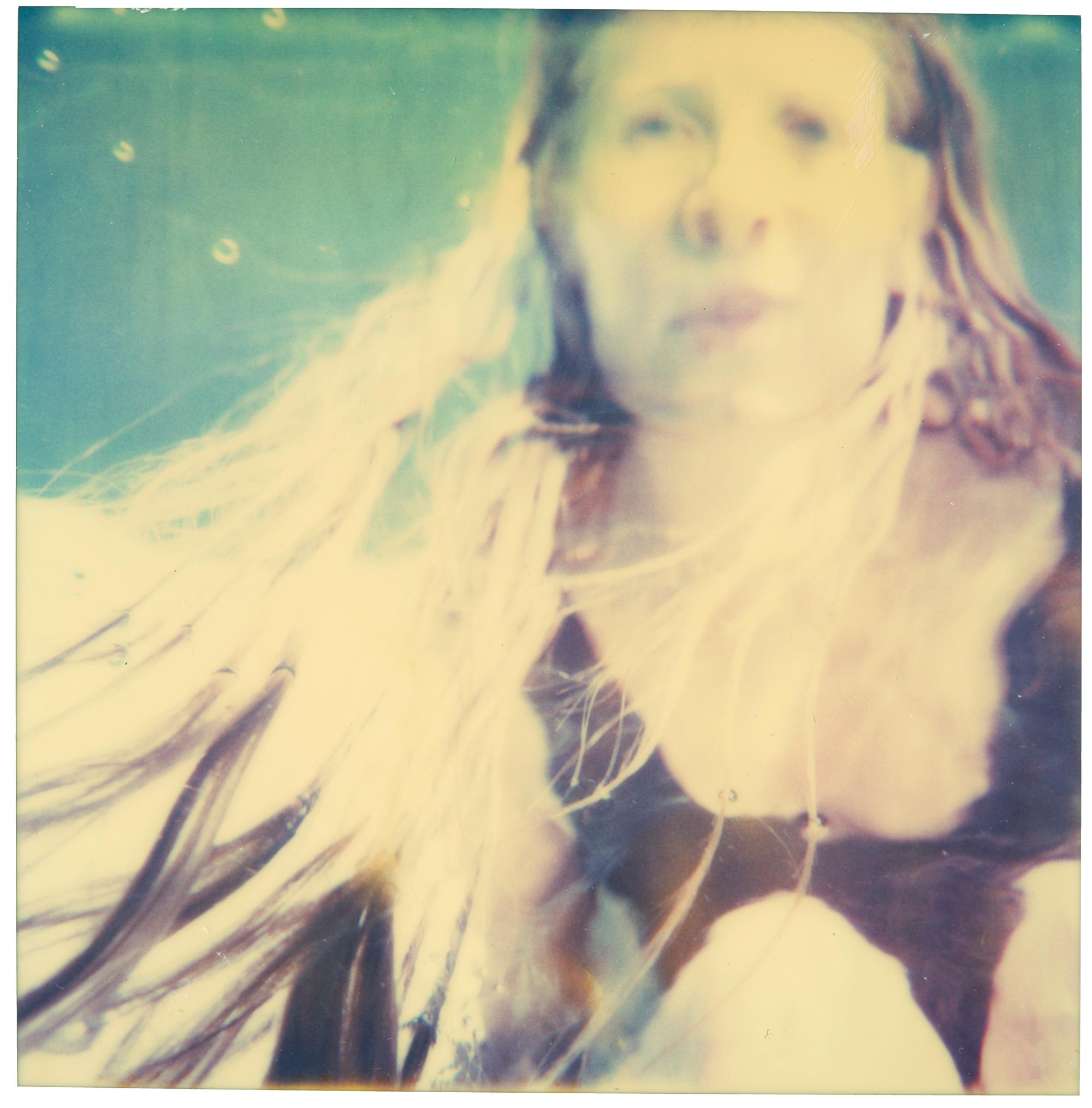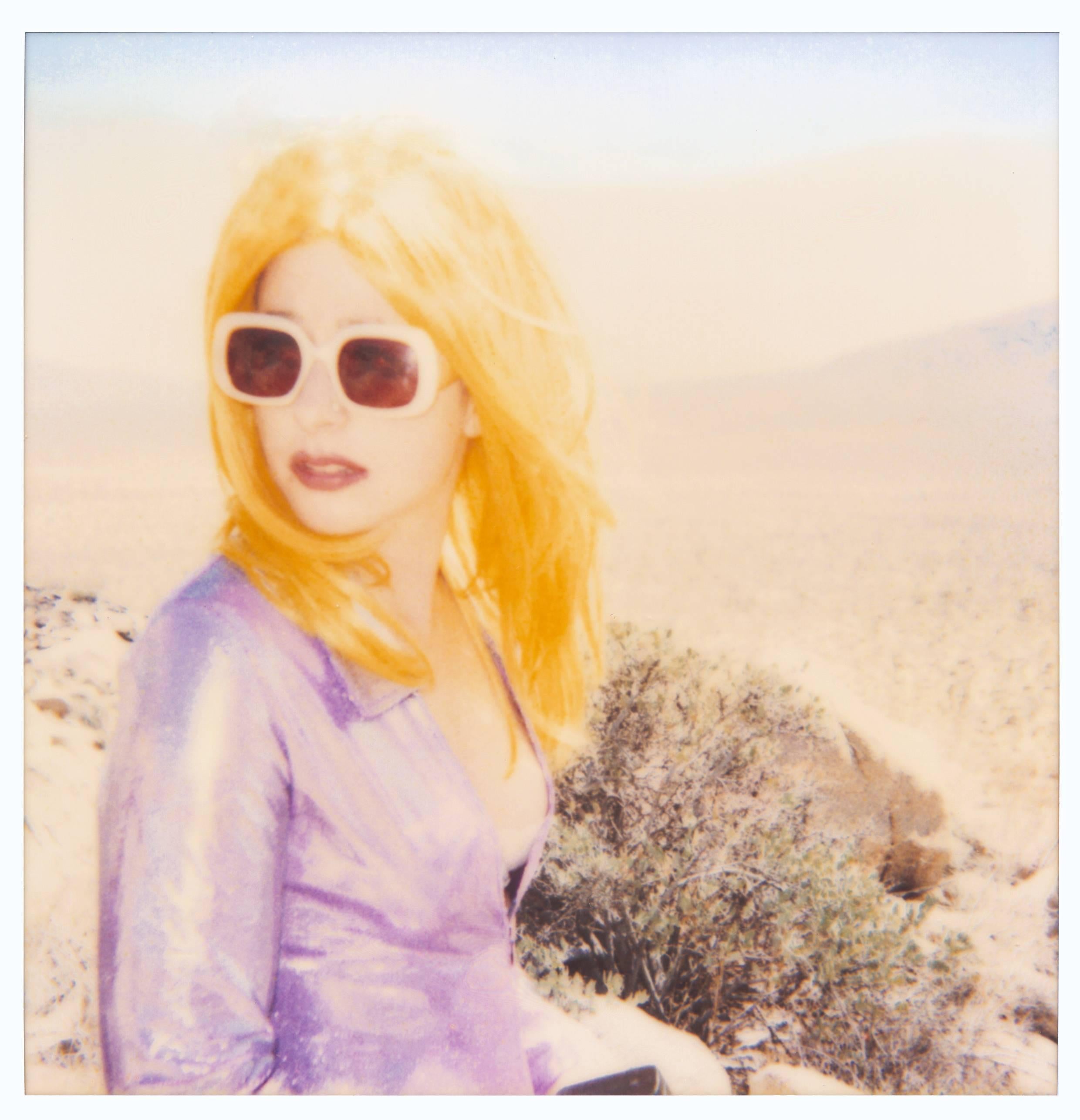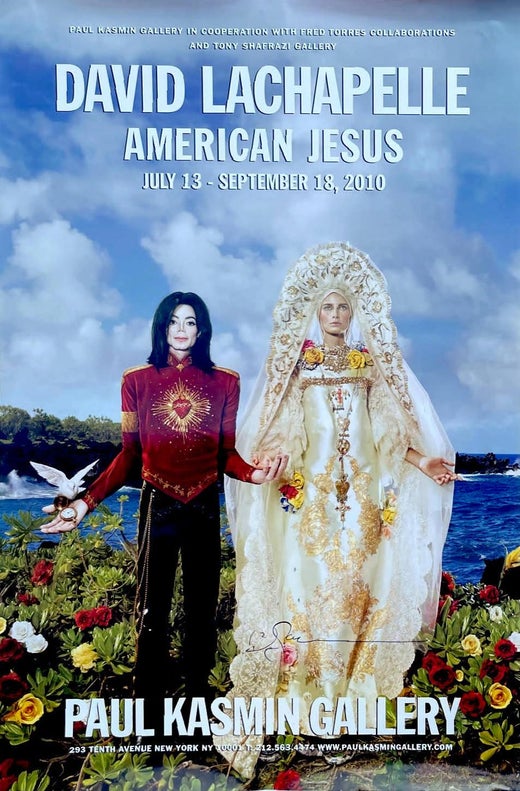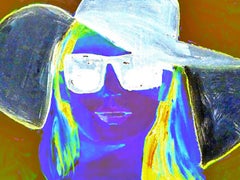
Lusty Spring
View Similar Items
David LaChapelleLusty Spring2001
2001
About the Item
- Creator:David LaChapelle (1964, American)
- Creation Year:2001
- Dimensions:Height: 72 in (182.88 cm)Width: 99 in (251.46 cm)
- More Editions & Sizes:Edition of 3 + 3 AP
- Medium:
- Movement & Style:
- Period:
- Condition:
- Gallery Location:New York, NY
- Reference Number:1stDibs: LU3122893483
David LaChapelle
David LaChapelle's highly polished, saturated and intricately composed photographs possess the surreal wildness of fever dreams, concocted as they are out of the imagery of celebrity, eroticism and modern Americana, and spiked with religious allegory and forebodings of doom.
Such work has made him among the most influential art and celebrity photographers of his generation. You might say LaChapelle sprung straight from the head of Andy Warhol, whose campy silkscreen fusions of the glamorous, the transgressive and the everyday forever changed contemporary art.
Like so many young gay artists who came out of the 1980s downtown New York scene, LaChapelle’s escapist visions arose out of a lonely, bullied adolescence. Although born in Connecticut, the photographer spent his early childhood in North Carolina, the youngest of three children. Later, when LaChapelle was in his early teens, his family moved back to suburban Connecticut, but his cowboy costumes and gender-bending ways did not earn LaChapelle friends among his new preppy classmates.
By high school, LaChapelle felt terrorized and suicidal. He fled to New York, where his good looks got him a job bussing tables at Studio 54. It was there that he reputedly first met Warhol, who had been his favorite artist since he first gazed upon a Gold Marilyn, while on a fourth-grade field trip to a museum.
LaChapelle's parents eventually retrieved him from New York, and, sympathizing with his plight, sent him off to the North Carolina School of the Arts. Despite a more embracing atmosphere, he didn’t stay long. A sojourn in London followed. When he returned to New York, around 1983, the punk-inflected downtown culture was churning out gritty new art. Keith Haring’s gay-themed Pop-art graffiti was in everybody’s face, and Robert Mapplethorpe’s S&M photos were on gallery walls.
Having scored a show of his black-and-white photography — already vaguely campy and transfiguration-obsessed — at New York’s then-fledgling 303 Gallery in 1984, LaChapelle attracted the interest of Interview magazine. Warhol was then at the zenith of his influence in both the art world and the downtown scene. Recognizing LaChapelle’s potential as an eye-catching celebrity photographer, he put him on staff, providing him with the creative milieu where his distinctive talent might develop.
There were editorial assignments for i-D, The Face and later for Vanity Fair, Vogue Paris and Rolling Stone. He also made excursions into advertising. One of his most talked about campaigns was a provocative print ad for Diesel jeans inspired by the famous photograph of the V-J kiss in Times Square, but this time showing Tom of Finland–type sailors in passionate embrace.
After being without an editorial home for several years, LaChapelle finally found a base at Details, where he was again encouraged to let his freak flag fly. So arresting were his images that it wasn’t long before “the Fellini of photography,” as New York magazine dubbed him in 1996, was again working for Interview. One of his most emblematic pictures from this era was a Lil’ Kim cover for that magazine, featuring the rapper’s nude body emblazoned with Louis Vuitton insignia (one of the most famous logos in luxury fashion).
Such visually zany, socially astute portraits prompted Richard Avedon to liken LaChapelle to a photographic Magritte, while also winning him invitations to direct music videos for such talents as Christina Aguilera, Moby and Amy Winehouse.
Find a collection of original David LaChapelle photography today on 1stDibs.
- Woman contemporary limited edition photography by Jochen CernyBy Jochen CernyLocated in London, GBDigitally remastered photography of a painting by A. Katz. Artwork will be printed on highest quality photographic paper, glued onto an aluminium-dibond plate and covered with acryl...Category
2010s Pop Art Portrait Photography
MaterialsC Print
- Shot SprintLocated in Aberdeen Dyce, GBI did a photo session of a neighbour in my bombed-out office in a studio in Kharkiv. A Russian fighter jet dropped a bomb on March 2 on the roof of this 5-storey building and a neigh...Category
2010s Pop Art Portrait Photography
MaterialsC Print
- Untitled (from ROBOTNICS Series)By Christian RothmannLocated in Kansas City, MOChristian Rothmann ROBOTNICS Series C-Print 2019 Edition S (Edition of 10) 12 x 8.3 inches (30.5 x 21 cm) Signed, dated and numbered verso Other Edition Sizes available: - Edition M (Edition of 6) 35.4 x 23.6 inches (90 x 60 cm) - Edition L (Edition of 6) 47.2 x 31.5 inches (120 x 80 cm) - Edition XL (Edition of 3) 88.8 x 58.8 inches (225 x 150 cm) PUR - Price Upon Request -------------- Since 1979 Christian Rothmann had more than 40 solo and 80 group exhibitions worldwide. Christian Rothmann had guest lectures, residencies, art fairs and biennials in Europe, Japan, USA, Australia and Korea. Christian Rothmann (born 1954 in Kędzierzyn, Poland ) is a painter, photographer, and graphic artist. In 1976 he first studied at the “Hochschule für Gestaltung” in Offenbach, Germany and moved to Berlin in 1977, where he graduated in 1983 at the “Hochschule der Künste”. From 1983 to 1995 he taught at the university as a lecturer and as an artist with a focus on screenprinting and American art history. To date, a versatile body of work has been created, which includes not only paintings but also long-standing photo projects, videos, and public art. Guest lectures, teaching assignments, scholarships and exhibitions regularly lead Rothmann to travel home and abroad. ------------------------ Rothmann's Robots These creatures date back to another era, and they connect the past and the future. They were found by Christian Rothmann, a Berlin artist, collector and traveler through time and the world: In shops in Germany and Japan, Israel and America, his keen eye picks out objects cast aside by previous generations, but which lend themselves to his own work. In a similar way, he came across a stash of historic toy robots of varied provenance collected by a Berlin gallery owner many years ago. Most of them were screwed and riveted together in the 1960s and 70s by Metal House, a Japanese company that still exists today. In systematically photographing these humanoids made of tin - and later plastic - Rothmann is paraphrasing the idea of appropriation art. Unknown names designed and made the toys, which some five decades on, Rothmann depicts and emblematizes in his extensive photo sequence. In their photographs of Selim Varol's vast toy collection, his German colleagues Daniel and Geo Fuchs captured both the stereotypical and individual in plastic figures that imitate superheroes which were and still are generally manufactured somewhere in Asia. Christian Rothmann looks his robots deep in their artificially stylized, painted or corrugated eyes - or more aptly, their eye slits - and although each has a certain degree of individuality, the little figures remain unknown to us; they project nothing and are not alter egos. Rothmann trains his lens on their faces and expressions, and thus, his portraits are born. Up extremely close, dust, dents, and rust become visible. In other words, what we see is time-traces of time that has passed since the figures were made, or during their period in a Berlin attic, and - considering that he robots date back to Rothmann's childhood - time lived by the photographer and recipients of his pictures. But unlike dolls, these mechanical robots bear no reference to the ideal of beauty at the time of their manufacture, and their features are in no way modeled on a concrete child's face. In this art project the robots appear as figures without a context, photographed face-on, cropped in front of a neutral background and reduced to their qualities of form. But beyond the reproduction and documentation a game with surfaces is going on; our view lingers on the outer skin of the object, or on the layer over it. The inside - which can be found beneath - is to an extent metaphysical, occurring inside the observer's mind. Only rarely is there anything to see behind the robot's helmet. When an occasional human face does peer out, it turns the figure into a robot-like protective casing for an astronaut of the future. If we really stop and think about modern toys, let's say those produced from the mid 20th century, when Disney and Marvel films were already stimulating a massive appetite for merchandising, the question must be: do such fantasy and hybrid creatures belong, does something like artificial intelligence already belong to the broader community of humans and animals? It is already a decade or two since the wave of Tamagotchis washed in from Japan, moved children to feed and entertain their newly born electronic chicks in the way they would a real pet, or to run the risk of seeing them die. It was a new form of artificial life, but the relationship between people and machines becomes problematic when the machines or humanoid robots have excellent fine motor skills and artificial intelligence and sensitivity on a par with, or even greater than that of humans. Luckily we have not reached that point yet, even if Hollywood adaptations would have us believe we are not far away. Rothmann's robots are initially sweet toys, and each toy is known to have a different effect on children and adults. They are conceived by (adult) designers as a means of translating or retelling history or reality through miniature animals, knights, and soldiers. In the case of monsters, mythical creatures, and robots, it is more about creating visions of the future and parallel worlds. Certainly, since the success of fantasy books and films such as Lord of the Rings or The Hobbit, we see the potential for vast enthusiasm for such parallel worlds. Successful computer and online games such as World of Warcraft...Category
2010s Pop Art Photography
MaterialsC Print
- Debbie Harry on the set of The Foreigner East Village, 1977 (Blondie)By Fernando NataliciLocated in NEW YORK, NYCooler than cool... Debbie Harry, New York, 1977, photographed on the set of "The Foreigner" by celebrated New York underground photographer Fernando Natalici. The Foreigner (direct...Category
1970s Pop Art Black and White Photography
MaterialsC Print
- The BeatlesBy Robin AustinLocated in Palm Beach, FLDye sublimation metal print. Robin Austin has always been a storyteller – whether earlier in his career, marketing successful global companies, or as the co-founder and creative visionary of Fusion 5, a global branding firm, or now as an artist – creating a rich landscape reflecting images of our shared cultural heritage. Each signed and limited edition work is a visual celebration of the moments captured in time. The genius of Robin’s art...Category
2010s Pop Art Black and White Photography
MaterialsC Print
- Unicorn (The Last Picture Show)By Stefanie SchneiderLocated in Morongo Valley, CAUnicorn (The Last Picture Show - 2005 20x20cm. Edition of 10, plus 2 Artist Proofs. Archival C-Print based on the Polaroid. Certificate and Signature label. Artist Inventory #1...Category
1990s Pop Art Color Photography
MaterialsArchival Paper, Photographic Paper, C Print, Color, Polaroid
